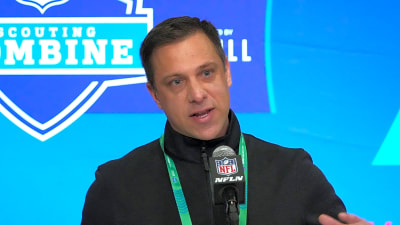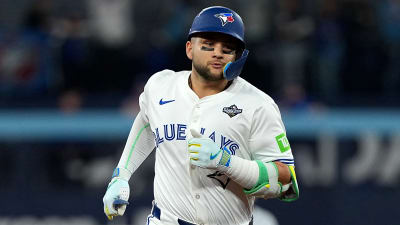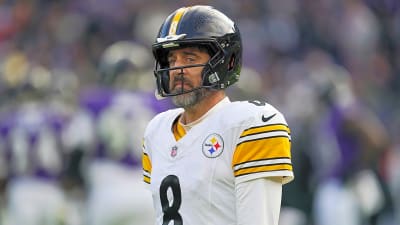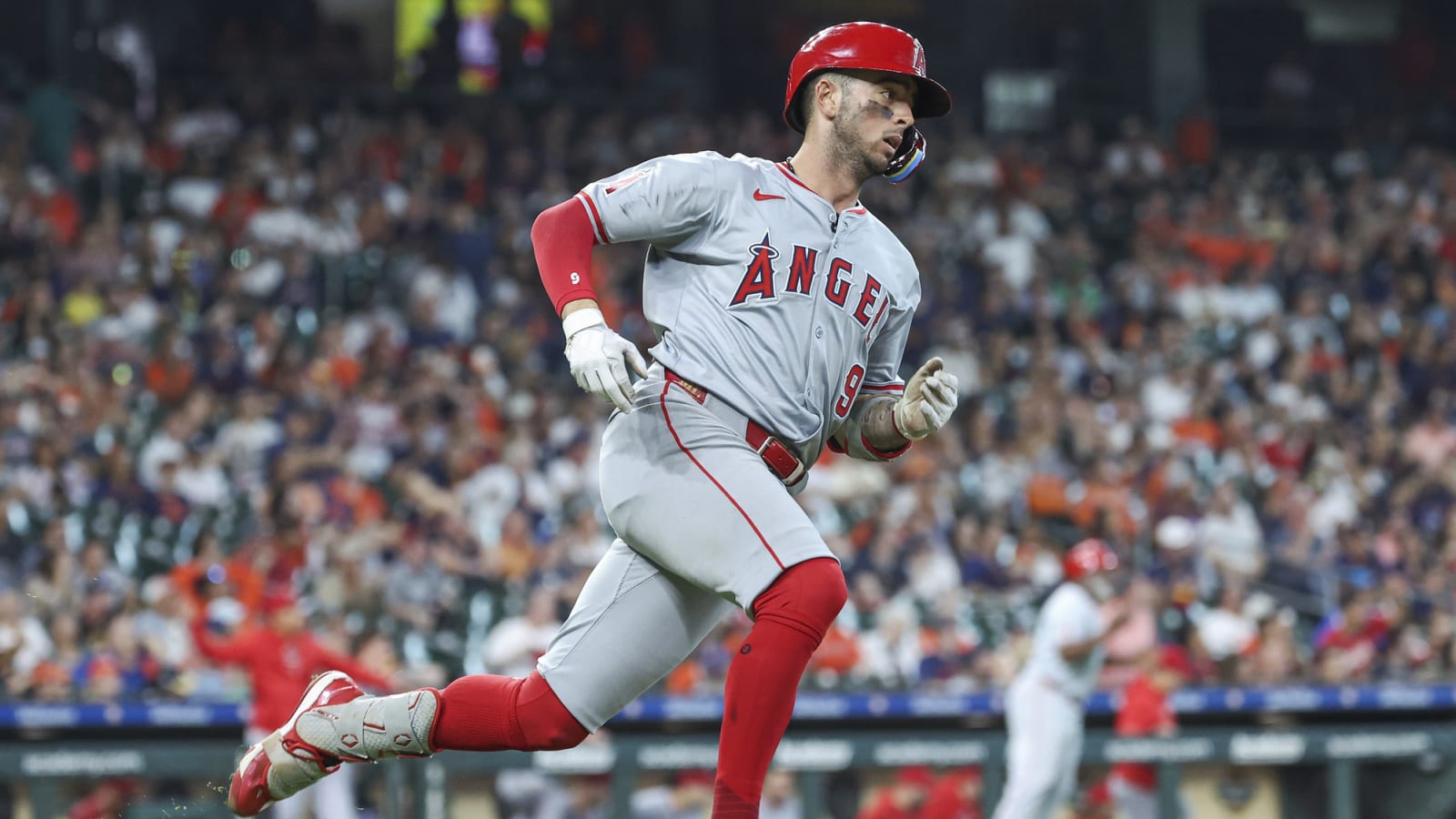
The Los Angeles Angels have made some puzzling decisions as an organization amidst MLB’s longest active postseason drought.
The oddest thing, though, might just be their fascination with rapidly promoting some of their top prospects to the big leagues, foregoing years of minor league development.
There have been several cases of this in the recent past, but none as dramatic as the most recent instance. The Angels added Ryan Johnson, who had no minor league experience under his belt, to their Opening Day roster.
After Johnson’s solid enough showing in spring training, the Angels opted to let their second-round pick from the 2024 draft get his first taste of professional baseball in an MLB bullpen.
As you can probably guess, Johnson hasn’t looked ready for the role manager Ron Washington had in mind for him. The 22-year-old right-hander had a rough debut, giving up five earned runs in 1.2 innings, and now he is sporting a 12.27 ERA and 2.45 WHIP across 3.2 MLB frames.
Johnson likely won’t be the only fast-tracked prospect in MLB by the end of the season either.
The Angels’ first-round pick in 2024 (Christian Moore, our No. 92 overall prospect) and the prize of the Carlos Estévez trade (George Klassen, our No. 87 overall prospect) have both been stamped with 2025 ETAs from our prospect expert Aram Leighton, despite minimal minor league experience to this point.
So, as the Angels remain as committed as ever to their fast-tracking approach, let’s discuss the most notable fast-tracked Angels prospects and examine the effect it’s had on their careers.
Previous Prominent Fast-Tracked Angels Prospects
Zach Neto, SS (MLB Debut: 2023)
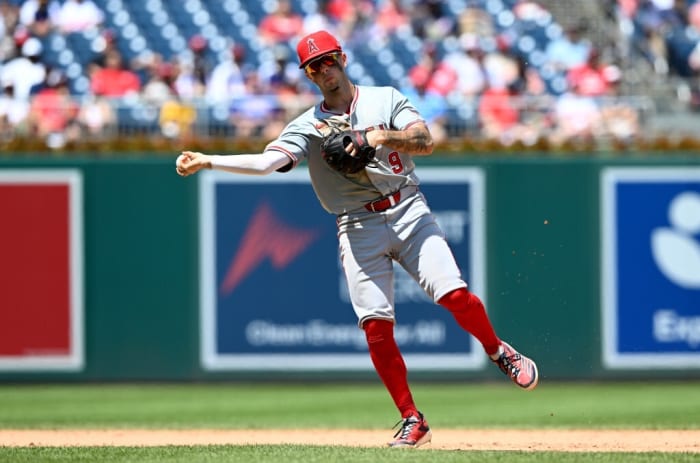
Neto is the best-case scenario when it comes to the prominent prospects the Angels have fast-tracked, as the 24-year-old shortstop looks like a budding star.
After being drafted 13th overall in the 2022 MLB Draft, it would take him just seven games in High-A, 37 games in Double-A and four games in Triple-A between 2022 and 2023 before the Angels selected his contact on April 15, 2023.
Now, what certainly helped his case and made him a safer fast-track candidate was the fact that he was such a polished hitter during his time in college. In 100 career games at Campbell, Neto slashed .403/.500/.751 with 27 HR and 108 RBI, and in his sophomore and junior years, he managed to post wRC+ totals above 200.
Add to that the fact he was a plus defender and swiped double-digit bags, and he made for one of the more sure-fire major leaguers in the first round of the draft that year.
Now, college ball isn’t the major leagues, so a .400 hitter in the NCAA won’t be a .400 hitter in MLB. That being said, though, there’s an argument to be made that perhaps Neto, although on a great path to major league success, could have benefitted from more than 48 games in professional baseball before being thrust into the show.
His debut season didn’t go as swimmingly as the Angels ought to have hoped it would. After two separate stints on the IL, Neto only managed to slash .225/.308/.377 with an 88 wRC+.
He did manage to craft a solid second season in the bigs, with a .249/.318/.443 slash line and 114 wRC+. However, this pales in comparison to not only his college numbers but also his strong numbers during his “cup of coffee” in the minors, where he was a .321 hitter with a .961 OPS.
Neto has also failed to show the same eye at the plate as he did in college. In his junior year, he posted a fantastic 7.4% K-rate with an equally fantastic 15.2% walk rate.
Again, there’s almost always going to be drops from college stats to professional stats. That being said, though, before he was promoted, after posting a 12.9% K-rate in High-A, Neto struck out 22.0% of the time in Double-A and Triple-A.
From a walk rate standpoint, he managed only a 5.9% clip in his one minor league stop that lasted more than seven games (30 games in Double-A Rocket City in 2022).
From the looks of it, this screams of a hitter that never really got cold in college, didn’t get the chance to cool down in pro ball and suddenly had to work out how to deal with adversity against the hardest competition on the planet.
All things considered, Neto has done a solid job with the limited professional developmental time he was given. That being said, you have to wonder what kind of hitter he would be today if he were given more than 41 games in the upper minors to try to develop a more consistent high-contact bat and better eye at the plate.
There could be an argument that Neto would be one of the better leadoff options in baseball, capable of hitting .300 with a low K-rate and high walk rate.
Nolan Schanuel, 1B (MLB Debut: 2023)

Until Johnson, Schanuel was the most dramatic case of the Angels fast-tracking a prospect. He was promoted just months after he was drafted in the first round of the 2023 draft.
Similar to Neto, he had a safe offensive profile coming out of college with Florida Atlantic. He was consistently (at least) a .300/.400/.500-type player all three collegiate seasons, putting up a terrific .447/.615/.868 slash line with 19 HR, 64 RBI and a 241 wRC+ in his junior year.
Then, in his limited time of higher-level pro ball, he put together a solid showing, slashing .333/.474/.467 with a 161 wRC+ in 76 plate appearances across 17 games in Double-A.
That proved to be good enough in the Angels’ eyes to warrant a big league call-up.
Overall, his promotion was probably the best-case scenario for a player with just 22 total professional games under his belt who bypassed Triple-A entirely. He managed to hit .275 with a .732 OPS and 112 wRC+, as well as walking 15.2% of the time and striking out at just a 14.4% clip.
The prominent red flag, though, was undoubtedly his dip in power, as hopes had to have been higher after he posted an .868 SLG and 19 HRs in just 59 games in his final college season.
A SLG lower than his OBP in Double-A, followed by just a .330 slugging clip in the majors in 2023 and a .362 posting with only 13 HRs in his first full season in 2024 was probably not the team’s hope for their first-round first base talent.
All in all, looking at his second year, it was a step back altogether for the 23-year-old. His average fell to .250, his OPS dropped to .706, his walk rate dropped four percent to 11.2% and his K-rate inflated to 17.0%. This culminated in a very average looking 104 wRC+.
While it’s still more of a “Monday morning quarterback” situation when discussing whether or not a more traditional approach to promotion would have unlocked more from Schanuel, the fast-tracking method certainly hasn’t helped him produce first-round draft pick-type numbers.
Reid Detmers, LHP (MLB Debut: 2021)
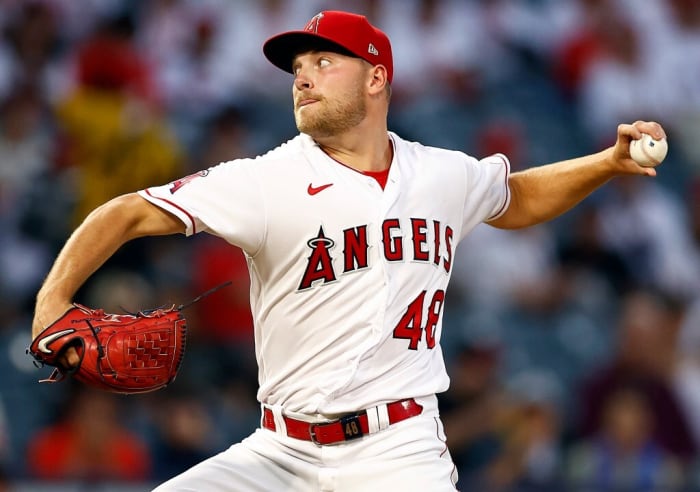
Detmers is a bit more of a bizarre case of prospect fast-tracking in the Angels’ system. He was promoted the year after he was drafted, which happened to be his first year of pro ball.
He had solid enough numbers before being promoted, with a 3.50 ERA, 1.17 WHIP and 16.17 K/9 in 12 Double-A starts and then a 1.13 ERA, 1.00 WHIP and 12.38 K/9 in a pair of Triple-A starts.
Now, a 7.40 ERA in five MLB starts in ’21 wasn’t great, but Detmers followed that up with a solid 3.77 ERA across 25 starts as a 22-year-old in his first full season.
All seemed to be going well, that is until a 4.47 ERA campaign in 2023 and then a 6.70 ERA posting in 2024 resulted in his demotion back to the minors.
Even though Detmers looked like he might have been ready at the time of his call-up, there were obviously flaws to his game, as a mid-4.00s and a high 6.00s ERA would indicate. And perhaps a bit more opportunity to showcase further success in the minors would have helped with his development.
Now, the Angels did end up optioning him back to the minors in 2024, but doing so a year and a half after promoting him and then sending him to the hitter-friendly Pacific Coast League was hardly the best confidence-booster to get him back on track. This was made clear after he pitched to a 5.54 ERA in 14 starts in Triple-A Salt Lake last season.
Now Detmers is back in the majors but has been relegated to the bullpen, which is hardly the role the Angels envisioned from one of their first-round selections.
Sam Bachman, RHP (MLB Debut: 2023)
Bachman is also a bit different from the other names on this list but for different reasons than Detmers.
Considering he was drafted in 2021 and didn’t make his MLB debut until 2023, he had more seasons under his belt than any of the other prominent recently rushed Angels prospects we’ve discussed. It’s how he performed (or didn’t perform) in the time leading up to his promotion that makes him another rushed prospect.
After a solid enough High-A season in 2021, where he pitched to a 3.77 ERA and 1.19 WHIP with 9.42 K/9 and 2.51 BB/9 in 14.1 innings across five starts, Bachman’s numbers in Double-A in 2022 and 2023 just didn’t meet the mark of what you’d imagine big league teams would traditionally look for.
In 12 starts in Double-A in 2022, he pitched to a 3.92 ERA and 1.51 WHIP with just 6.18 K/9 and 5.15 BB/9. Then, in six starts in Double-A in 2023, he threw to a 5.81 ERA and 1.33 WHIP. He was back up to 9.91 K/9 but also up to 6.84 BB/9.
All the while, he was constantly on and off the injured list, making a promotion seem as though it shouldn’t even have been in the cards.
None of this stopped Los Angeles from bullishly promoting Bachman straight from Rocket City to the big leagues, foregoing Triple-A altogether.
In his major league stint, he threw to a pretty pedestrian 3.18 ERA and 1.65 WHIP with 7.41 K/9 and 5.82 BB/9 in 17.0 innings across 11 appearances, all out of the bullpen, before landing on the IL in the middle of July for the remainder of the season with a shoulder injury.
Since then, Bachman has yet to make it back up to the majors, fighting both injuries and further 5.00+ ERA seasons across the upper minors.
Despite the bullpen being the only place that Bachman got any sort of major league action, he’s yet to throw an inning of relief in the minors whatsoever. This makes his rush to the big leagues look all that more questionable, and has possibly put a shock in his overall development, as the numbers proved he wasn’t even ready for Double-A, let alone MLB baseball.
Prospect Fast-Tracking: Are the Angels Prioritizing Short-Term Gains Over Long-Term Success?

You can see by now that the Angels have had mixed results with their rapid-promotion technique.
Detmers and Bachman are examples of the damaging effects such a lack of development time can have on a big league career.
However, Neto and Schanuel are examples of how this method can bear major league-caliber players. That being said, there’s certainly been reason to believe that perhaps these two aren’t quite living up the potential they may have been capable of reaching had they not been forced to navigate the early stages of professional baseball against the best-of-the-best under the brightest of lights.
Now that the Angels have already done the same once again with Johnson – and with Moore and Klassen’s arrivals seemingly just around the corner – this topic is rearing its ugly head again.
With minimal success to show for their years of prospect fast-tracking efforts, while entering yet another year with a bottom-end farm system, the Angels are in the midst of making the same mistake again for no acceptable reason.
Because at the end of the day, with the roster they currently have, more under-proven rookies in the big leagues aren’t going to get the Angels any closer to being a postseason contender.
More must-reads:
- Veteran closer Kenley Jansen fills hole in back end of Tigers bullpen
- San Francisco Giants reward Adrian Houser in journey from the scrap heap
- The 'AL and NL MVPs since 2000' quiz
Breaking News
Trending News
Customize Your Newsletter
 +
+
Get the latest news and rumors, customized to your favorite sports and teams. Emailed daily. Always free!
